

|
| Home Previous Next | |
|
|
|
[Click on any photo to enlarge it] Day Six - A Little More of Xi'anXi'an, City Walls, & the Small Wild Goose PagodaIt Begins with Lunch!We actually had a morning off this morning. We had to prepare our luggage for our flight in the evening, but not much else to do. After breakfast I considered trying to walk to the City Walls, but decided I wouldn't have enough time to see everything I wanted to see, so I wrote out some postcards instead. It was nice to rest a bit after the hectic schedule we've had. We met downstairs in the lobby around noon. Our first stop would be lunch. This time we went to the Shaanxi Sunshine Grand Theatre. They had a grand entrance with a miniature display of the Terracotta Warriors, complete with a copy of one of the bronze chariots. 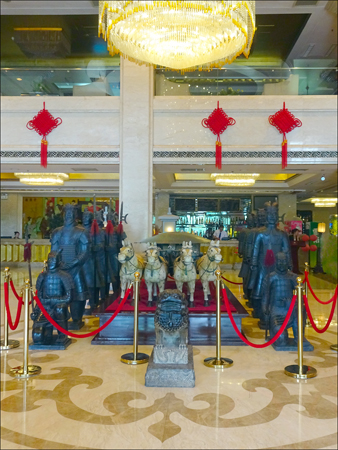
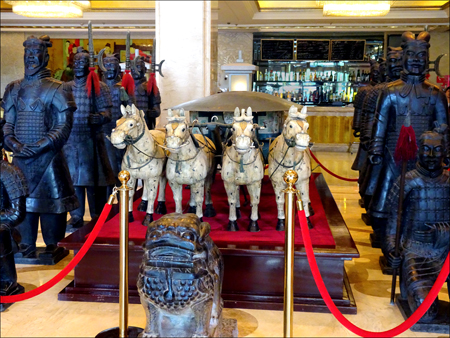
In the front of the display was a stone lion. There was a sign saying that it was 600 years old. 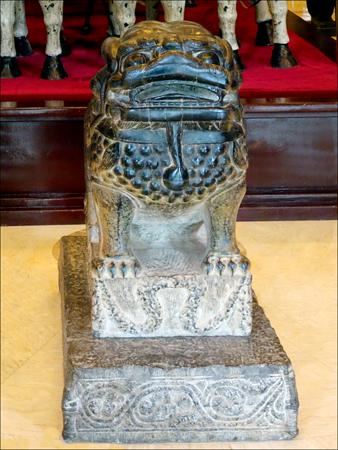
The sign also said you should touch it for good luck. 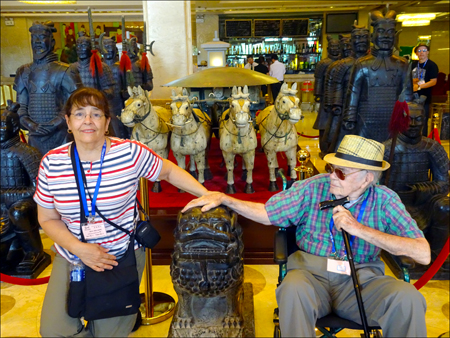
There is a theatre here as the name suggests, but we were only here for the buffet. And what a buffet it was. So many choices and many varieties of food. Some things were cooked to order. It was all pretty good. And we all ate a lot. In addition to the terracotta warriors display, the lobby was full of many treasures. 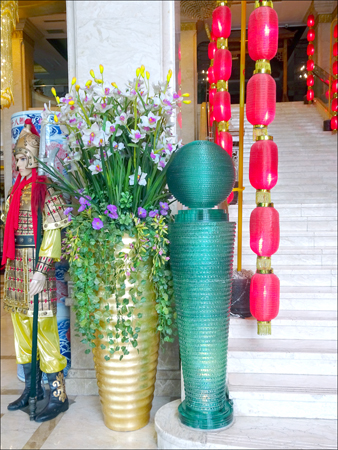
The most powerful symbol of wealth and prosperity in China is called the Jin Chan – a three-legged toad or frog holding a coin in its mouth. It also sits on a pile of coins. It is supposed to bring you abundant blessings of wealth. 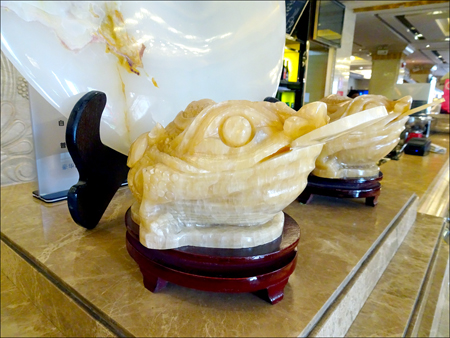
Jin Chan
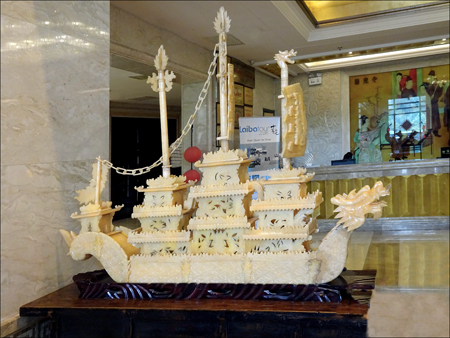
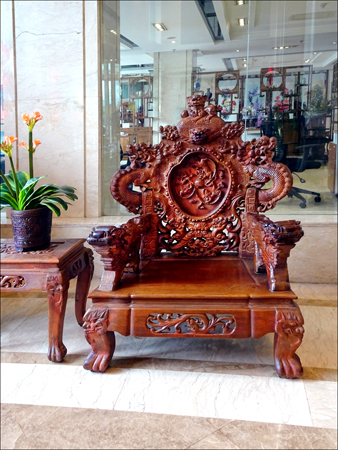
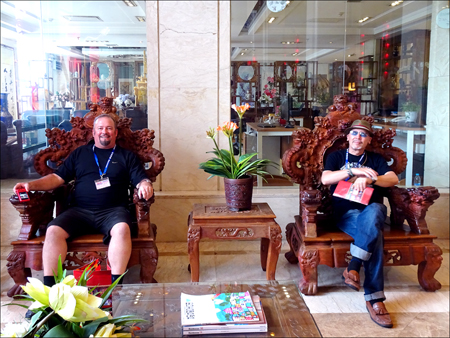
Mark and Gus sitting in the Carved Chairs
This place also had a theatre. After lunch I wandered over and had a look. It looked quite nice. 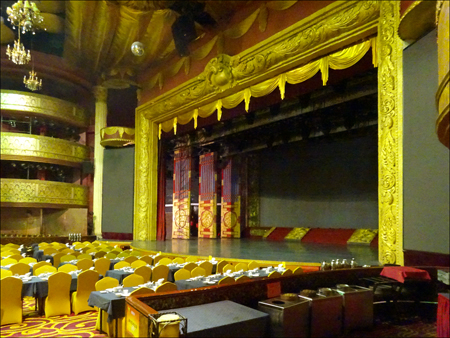
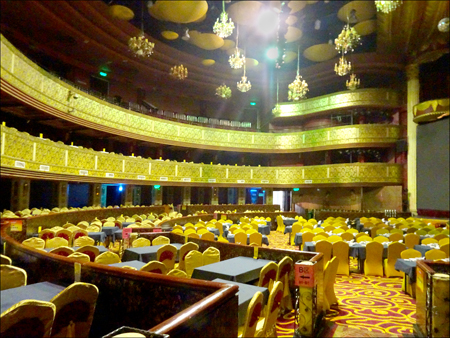
Around Xi'anAs in Beijing, there were some interesting buildings in Xi'an. Unfortunately we were moving so fast I didn't get to photograph of a lot of them. Here's a just a few. 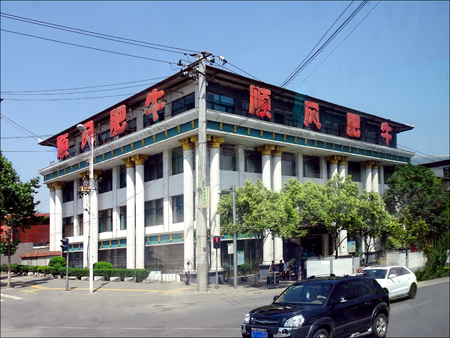
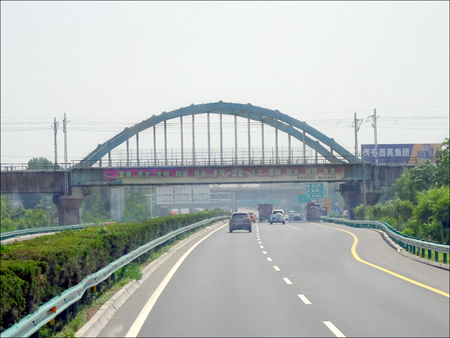
Railroad bridge over the G045, Xi'an
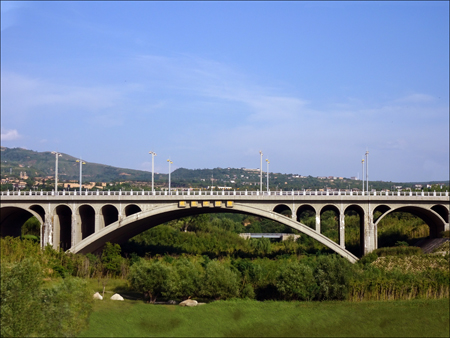
Fenghuang Avenue Bridge, Xi'an
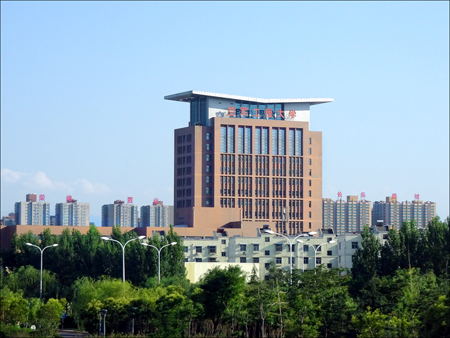
Air Force Engineering University, Xian
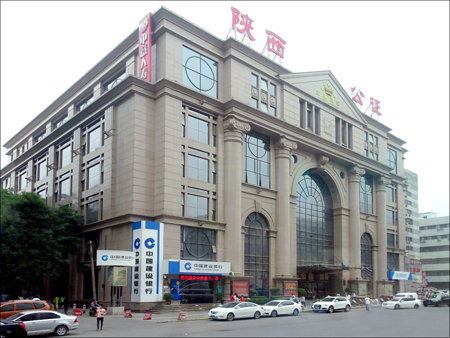
Jin Xin International
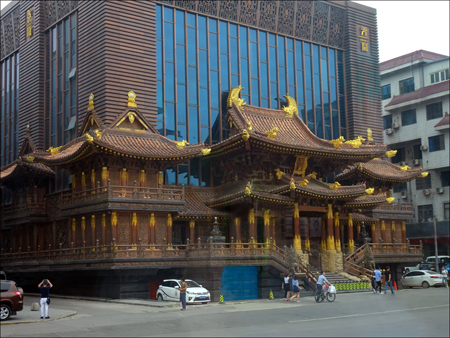
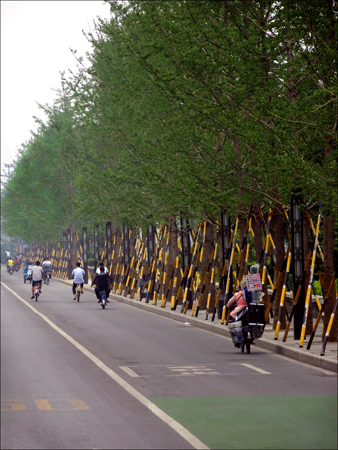
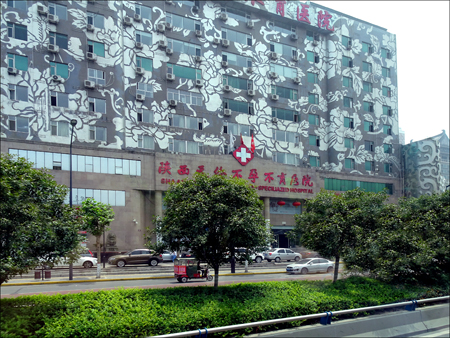
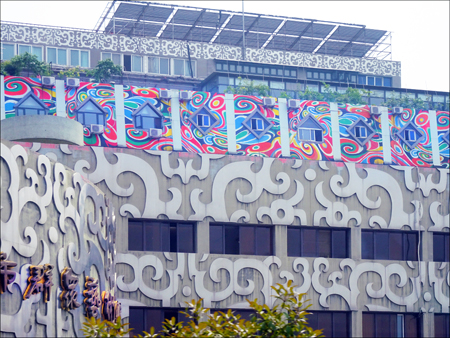
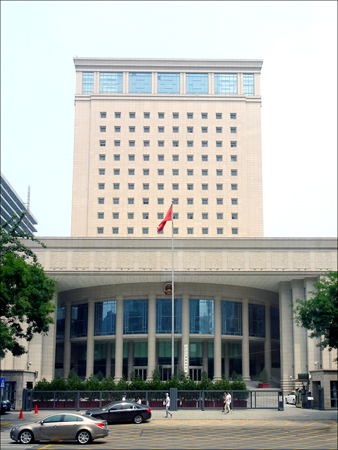
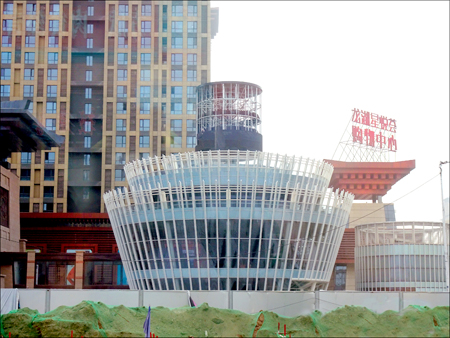
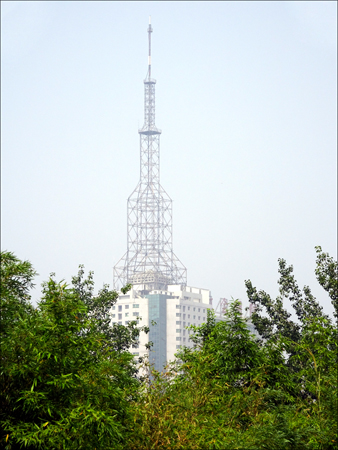
Click here for Postcards of Xi'an Xi'an City WallsXi'an has one of the most complete and well-preserved ancient defensive city walls to exist anywhere in China. Some of the original earthwork foundations for the walls go back to the Tang Dynasty (618-907 A.D.) when Xi'an was known as Chang'an. The earthworks were made from earth, quick-lime and a gelatinous rice extract mixed together. This created an extremely strong wall which remained until the Ming Dynasty (1368-1644 A.D.). Then the Hongwu Emperor – the first of the Ming Dynasty – ordered that the walls be rebuilt and enclosed with stone. After this rebuilding, the walls stood 12 meters high. They were 12-14 meters across the top, 15-18 meters thick at the bottom and a total of 14 kilometers in length. They remain so today. Along the city walls are ramparts, small structures that extend out from the main wall allowing soldiers to see all areas of the wall and watch for anyone attempting to climb the walls. There is a rampart every 120 meters along the walls, which is just within the range of an arrow shot from either side. There are a total of 98 ramparts along the city walls, each with a sentry building on top. There were four gates leading in and out of the city, one at each direction of the compass, north, south, east and west. Each gate comprised three towers. The gate tower sits in front of the wall and is used to lift and lower the drawbridge. The narrow tower is in the middle and is the defensive tower, having windows for archers. The main tower is the innermost one, and forms the entrance to the city. Between the narrow tower and the main tower are tunnels in which soldiers could be stationed. There are also horse passages leading from the tunnels to the tops of the walls made of gradually ascending steps that would be easy for war horses. There are 11 horse passages in the walls. In the four corners of the city walls are watchtowers. The southwestern one is round, but all the others are square. On top of each watchtower are corner ramparts which are higher and larger than the ordinary ramparts. Finally, there is a wide moat surrounding the city walls with a huge drawbridge which allowed access to the city. The moat is 18 meters wide and 6 meters deep. The walls in Xi'an are built in a rectangle and surround the downtown area of the city. The streets of Xi'an are arranged in a grid much like modern cities, so it's easy to navigate. We drove in and out of the city through the city walls many times during our stay here, but unfortunately never had the opportunity to visit them. I'm told it's a 4-hour walk along the top, but I'm sure there is much to see. 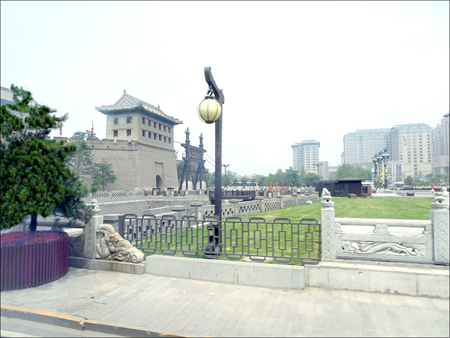
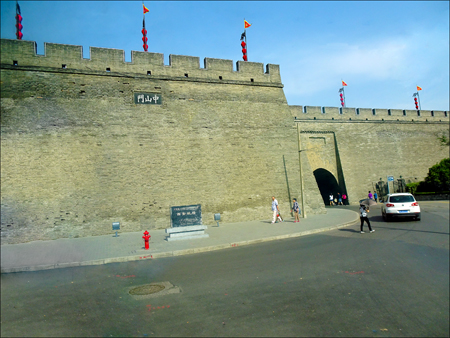
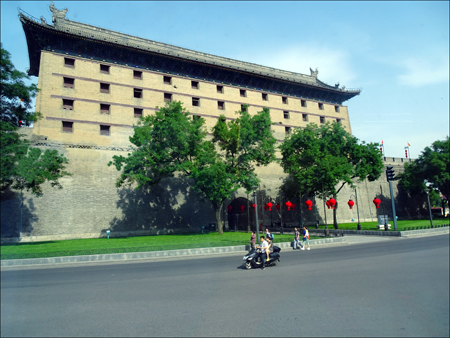
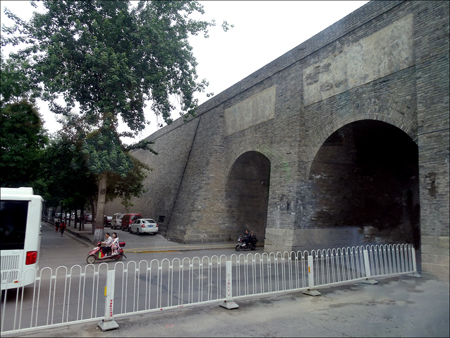
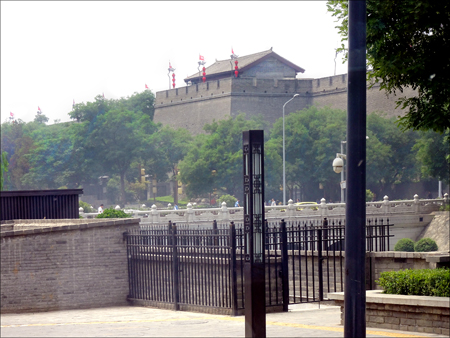
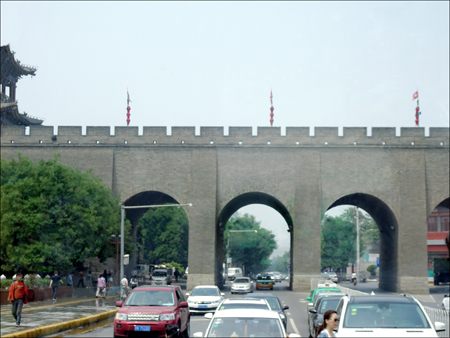
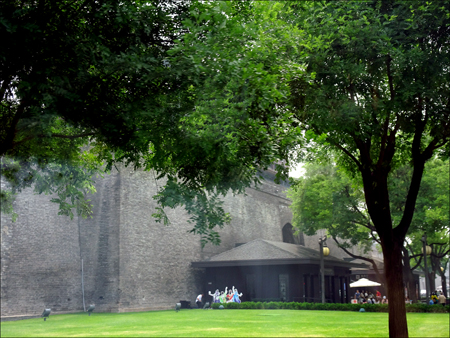
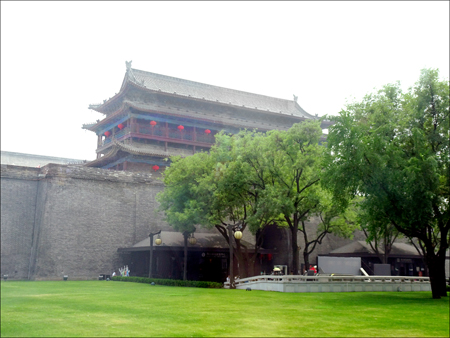
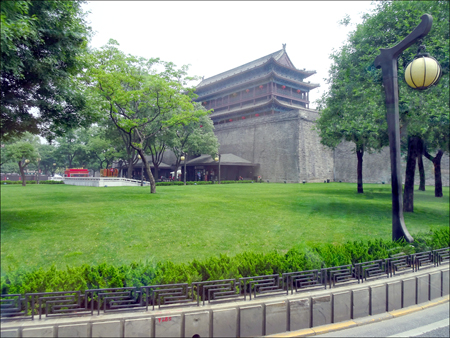
Click here for Postcards of Xi'an City Walls Small Wild Goose PagodaDuring the time of the Silk Road when so much culture from other parts of the world was coming to Chang'an (the name of Xi'an in those days), two Buddhist Temples were built here. The Giant Wild Goose Pagoda (built in 652) and the Small Wild Goose Pagoda (built between 707-709). We only got to visit the latter. The Small Wild Goose Pagoda was originally called Jianfu Temple Pagoda. It was built to store the sutras brought here from India by monk Yi Jing. Because it resembled the Giant Wild Goose Pagoda, it became known as the small one. It was first built with 15 stories and stood 45 meters in height. Numerous and violent storms and earthquakes destroyed the top floors so that now it stands only 43 meters in height. The base of the pagoda is square, each side measuring 11.38 meters. Our local tour guide, Ye Nan, told us a story about the pagoda. It seems that during a particularly violent earthquake in 1487 the pagoda cracked. The crack was about 1 foot across. In 1521 – 34 years later – there was another violent earthquake during which the crack disappeared. For centuries this was viewed by the people as magical. However during a restoration in 1949 it was discovered that the ancient craftsmen had formed the base of the temple as a hemisphere. This way the temple has a lot of flexibility during an earthquake, much like the dolls that don't fall down. 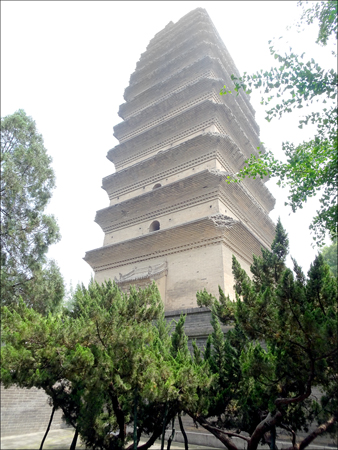
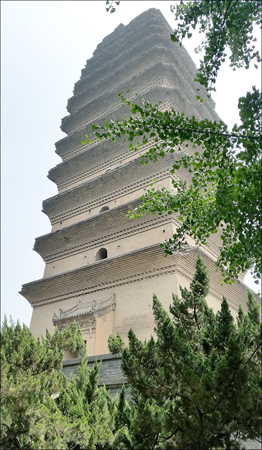
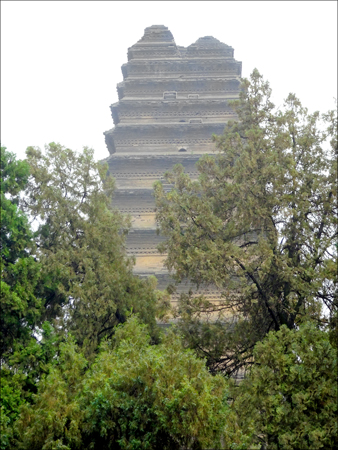
The Pagoda sits in a beautiful garden with many ancient trees and smaller buildings and steles. 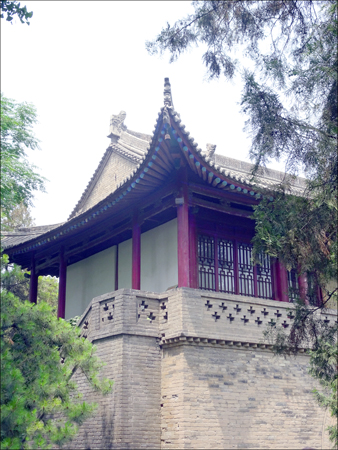
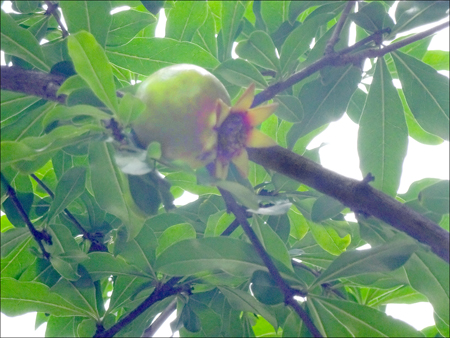
Young Pomegranate
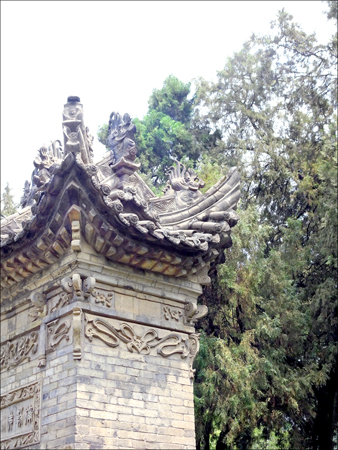
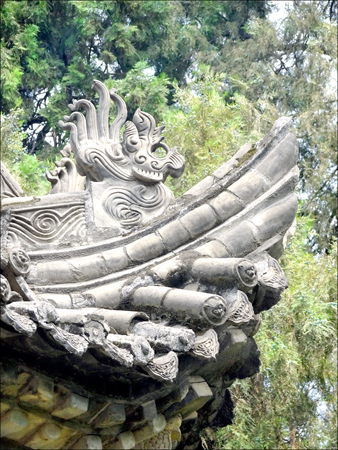
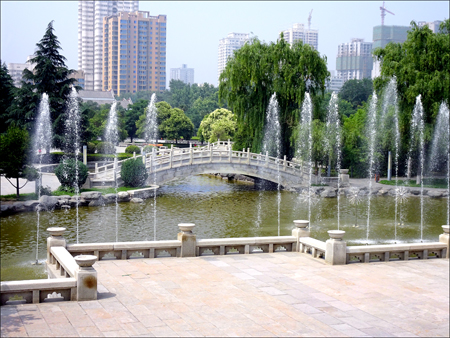
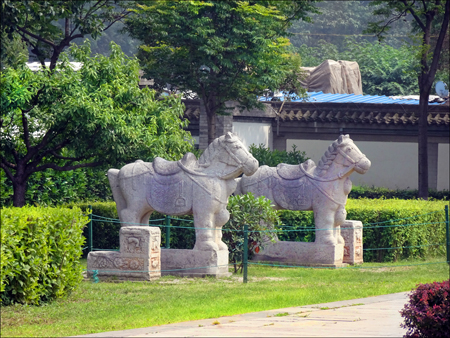
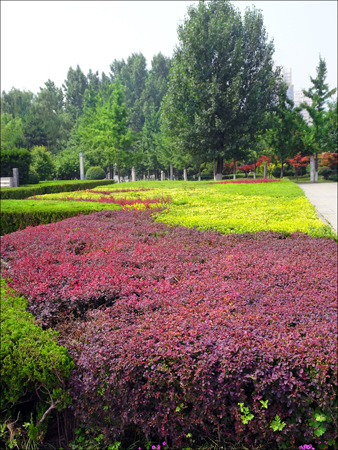
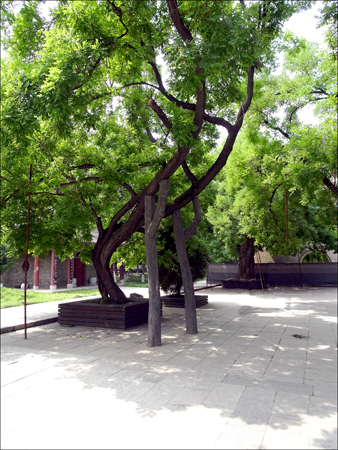
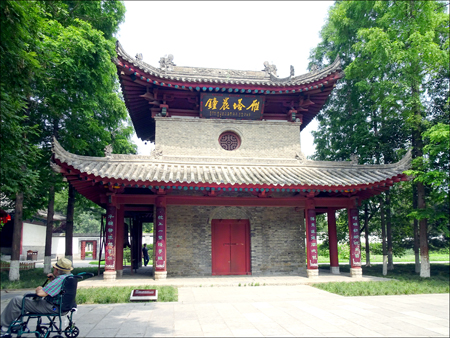
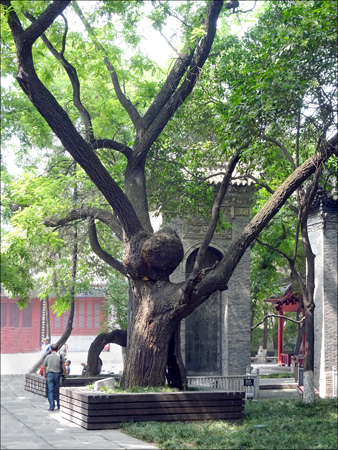
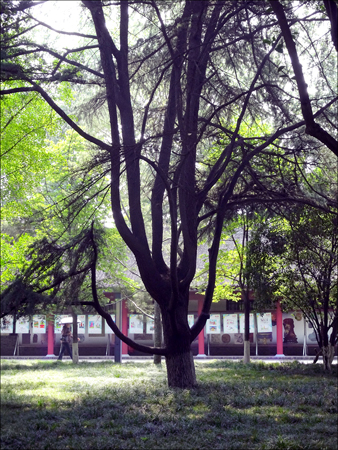
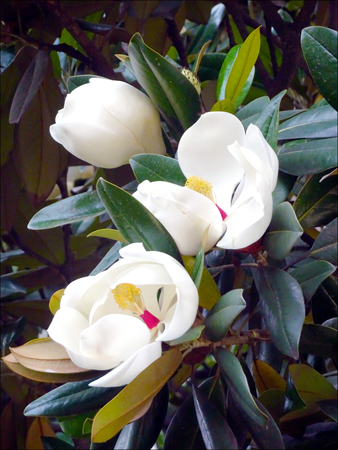
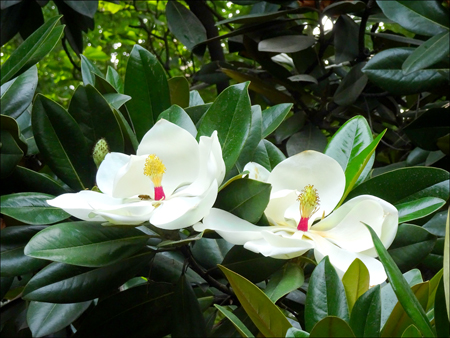
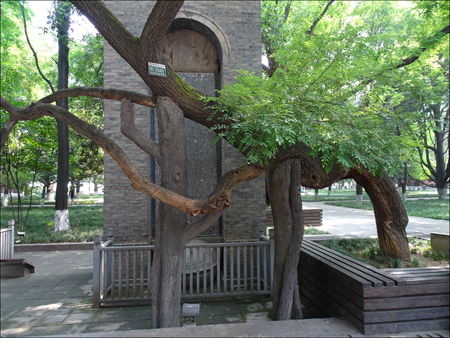
1,300-year-old tree
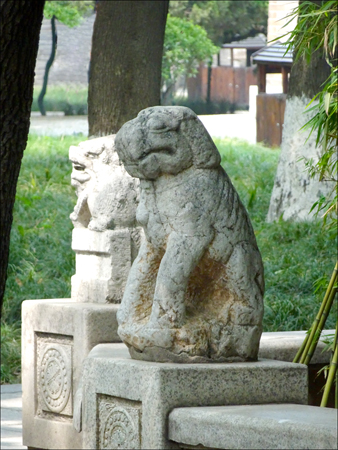
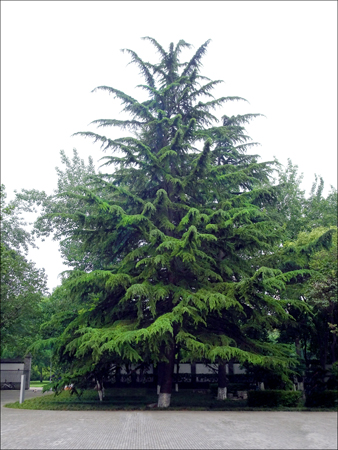
While we were wandering through this beautiful setting, we could hear the sound of a very low bell. It was very magical. So we walked toward the sound and found the "Morning Bell". The original bell was built in 1192. The bell is 3.5 meters high and weighs around 10 tons. It was tolled every morning by the monks to pray for happiness. The sound can be heard 3 miles away. The original now hangs in the bell tower near the pagoda, and a copy hangs in the garden for tourists to try ringing. 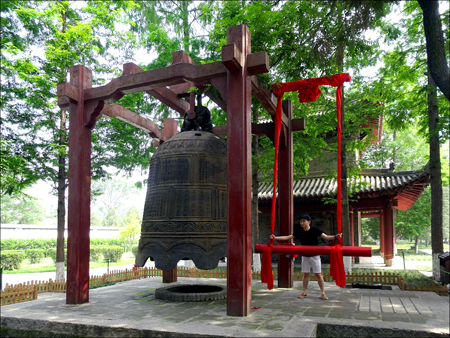
We were then taken into a calligraphy classroom on the grounds of the Pagoda. Here we were given a lesson in how to hold and use a brush. 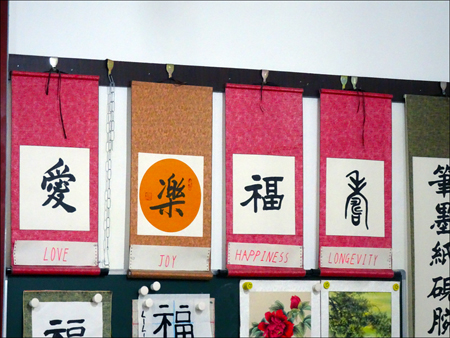
We got to try our hands at some basic calligraphy. Then the instructor came around and put his stamp on each work to show his approval. 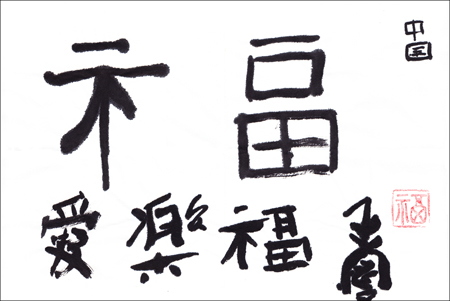
Irma's Calligraphy
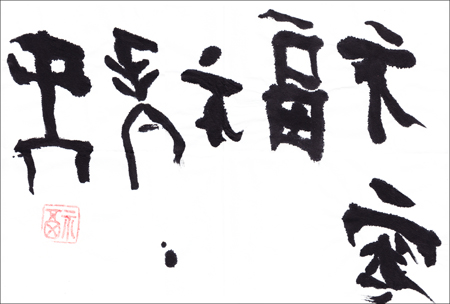
Reuben's Calligraphy
Then it was off to the Xi'an airport for our flight to Wuhan! |
|
| Home Previous Next | |
|
|

|
|
|
Irma Hale E-mail: Copyright © Irma Hale. All
Rights Reserved. Free counters provided by Vendio |